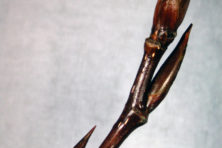The Poplar Problem
- Share
- Tweet
- Pin
- Share
Yesterday I wrote about the quick death of the Lombardy Poplar, and I asked for reader’s insights about the trees. A handful chimed in with more interesting information.
John Meredith, landscape architect and owner of Lakeshores Landscape and Design of Carlsville:
“The Lombardy was used mainly as a cheap and quick growing wind break. They could be planted by the hundreds as small, inexpensive saplings that would mature rapidly. Most people who plant short-lived trees use the theory “Let the next guy worry about them.”
About 10-15 years ago a willow hybrid came out touting the same advantages that the Lombardy did, cheap and fast. They are now falling on the same fate, death by disease,drought, wind and age.
The lesson is, plant a variety of trees; maple, oak, hackberry, linden, catalpa, and yes, even poplar.”
Ginny Siegel
“My cousin and I were just talking about the poplar trees that our great aunt planted in the late 1940s because they were quick growing. Yes, she realized that they only live for 15-20 years, but her house was new then and she wanted something fast-growing next to her garage.
The trees just died this year. Of course my great aunt did not live to see her trees over 60 years old. I wonder if some of those other dead poplars are much older than the 15-20 years?
Laurie Buske of Baileys Harbor:
“When people plant poplar’s they are choosing a fast growing tree for instant curb appeal, and they have pretty little leaves, similar to a birch. Most of the time people are not paying attention to who will own the land or property down the line.
However they have a short life span and are very ugly when they die, not to mention that they cause problems with power lines. County F in Baileys Harbor has them in a few areas.”

